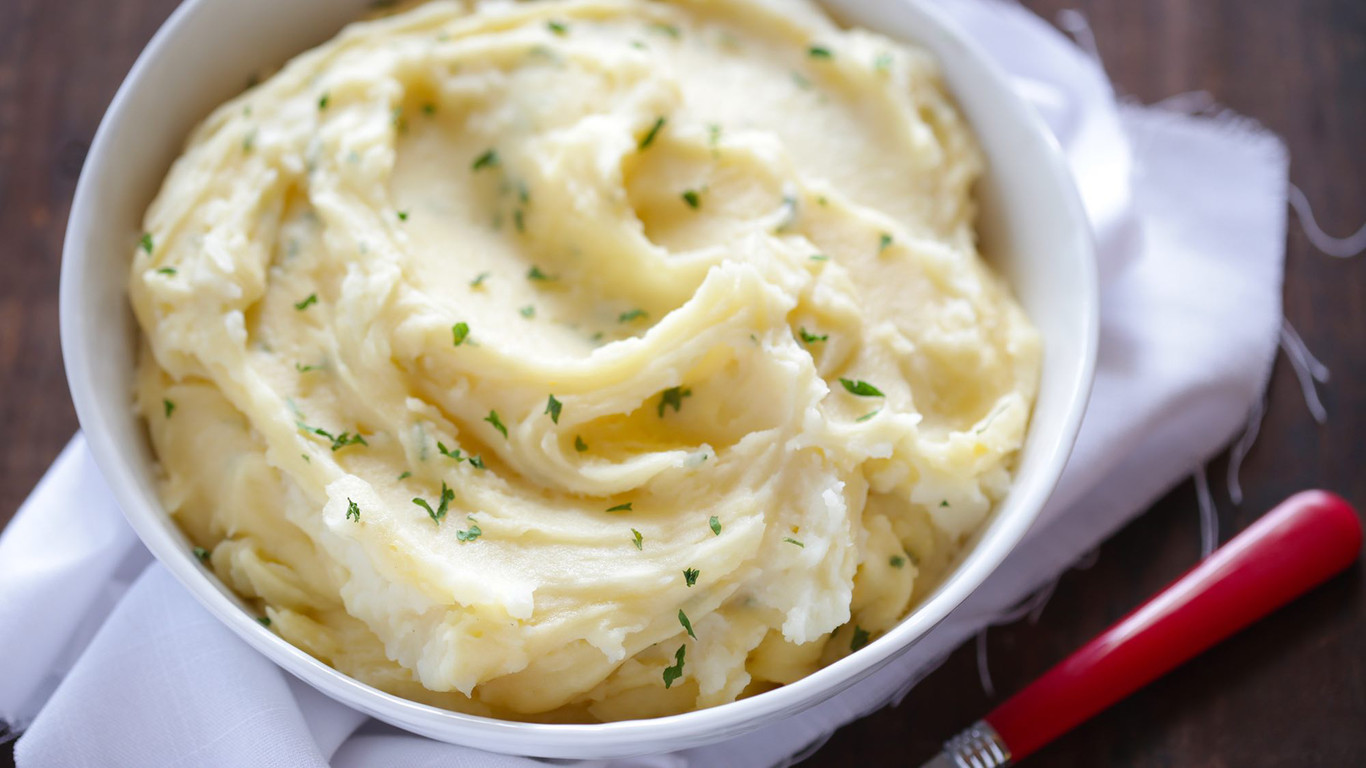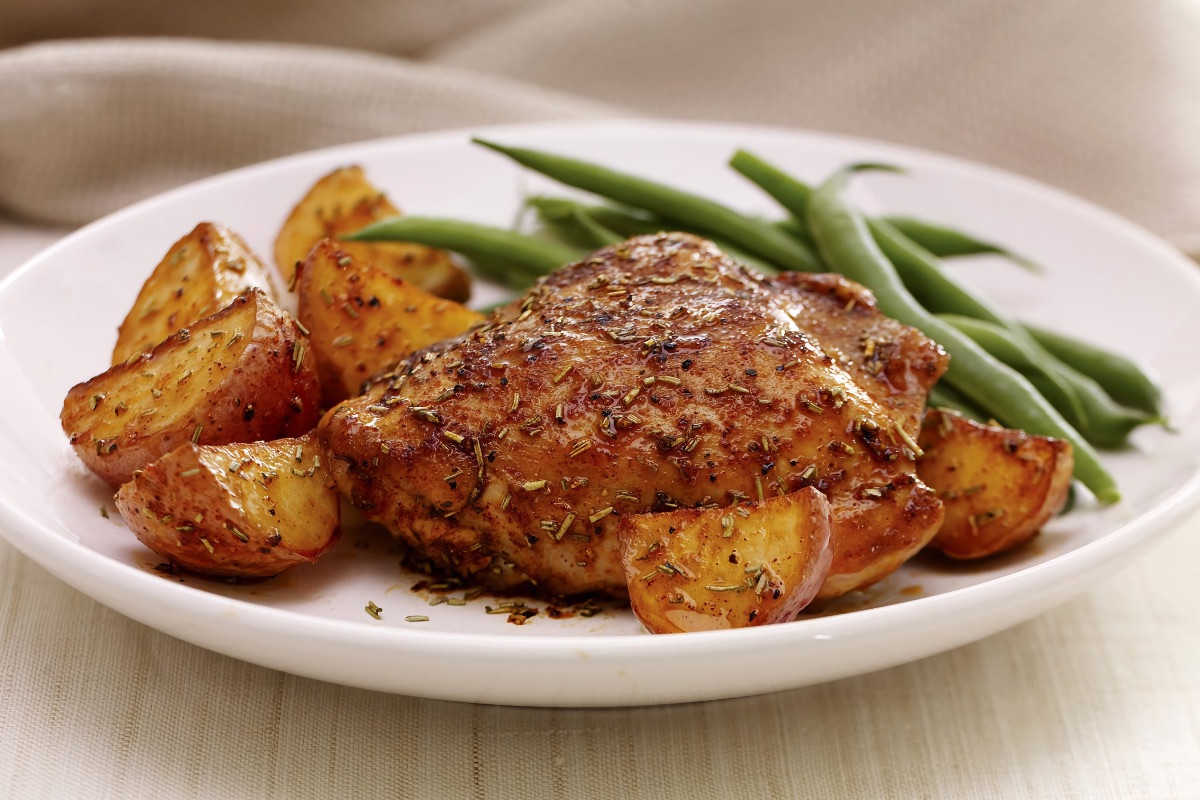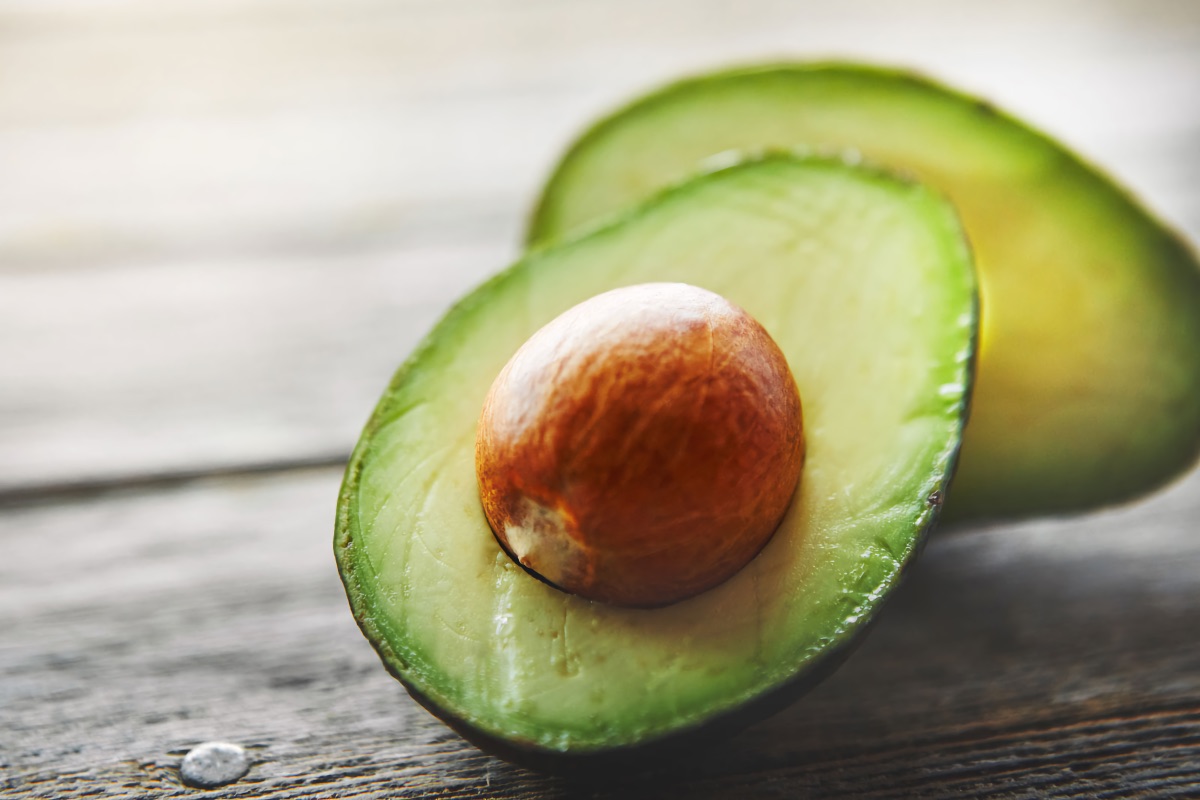Learn how to make mashed homemade potatoes with our step-by-step instructions and 5 tips for the fluffy, best mashed potatoes.
My grandmother used to make the most amazing smooth-as-silk mashed potatoes that were never gummy, lumpy or dry. What was her secret? Tons of butter and whole milk. I would love to follow in her footsteps and make her recipe as is, but I would have to spend the next month on the treadmill working off those potatoes.
We've tested and developed many mashed potato recipes in the EatingWell Test Kitchen, discovering a few tips to getting the classic fluffy result without dousing them in a sea of melted butter and heavy cream.
How you like your mashed potatoes comes down to personal preference. Maybe you like them chunky: unpeeled and mashed by hand. Or you're a connoisseur of silky-smooth whipped potatoes. And perhaps you're looking for a way to jazz up this holiday must-have with more flavor? Whatever the case, we've got you covered. Here's everything you need to know for making the ultimate mashed potatoes: What potatoes to buy, how to cook them and tips for achieving your desired mashed-potato texture. Plus find some of our new favorite things to stir into mashers, like roasted garlic, sautéed leeks or a touch of brown butter. Read on: your best mashed potatoes await.
To make great mashed potatoes, follow the steps below. Then season the potatoes with flavorings of your choice.
Step 1: Prep the Potatoes
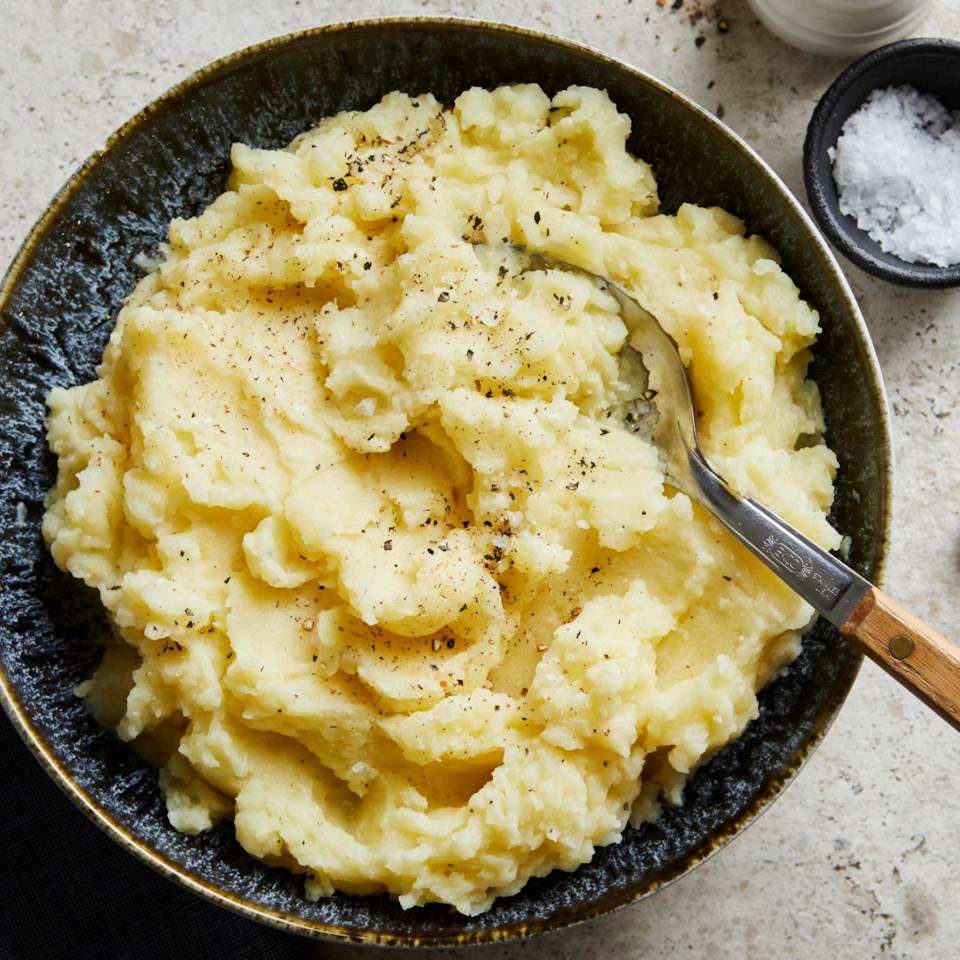
To serve about 8 people, start with 3 pounds Yukon Gold potatoes (about 12 medium). The potato peel offers nutritional benefits like fiber and potassium. Leave it on for rustic mashed potatoes, but peel it off if you want to whip or rice them for a smoother texture. Then cut potatoes into 2-inch chunks.
Step 2: Cook the Potatoes
On the Stove:
Place the potatoes and 1 tablespoon salt in a large heavy saucepan; add cold water to cover the potatoes by 2 inches; bring to a boil. Reduce heat to a simmer, cover and cook until the potatoes are very tender, 10 to 15 minutes. Drain well.
In the Slow Cooker:
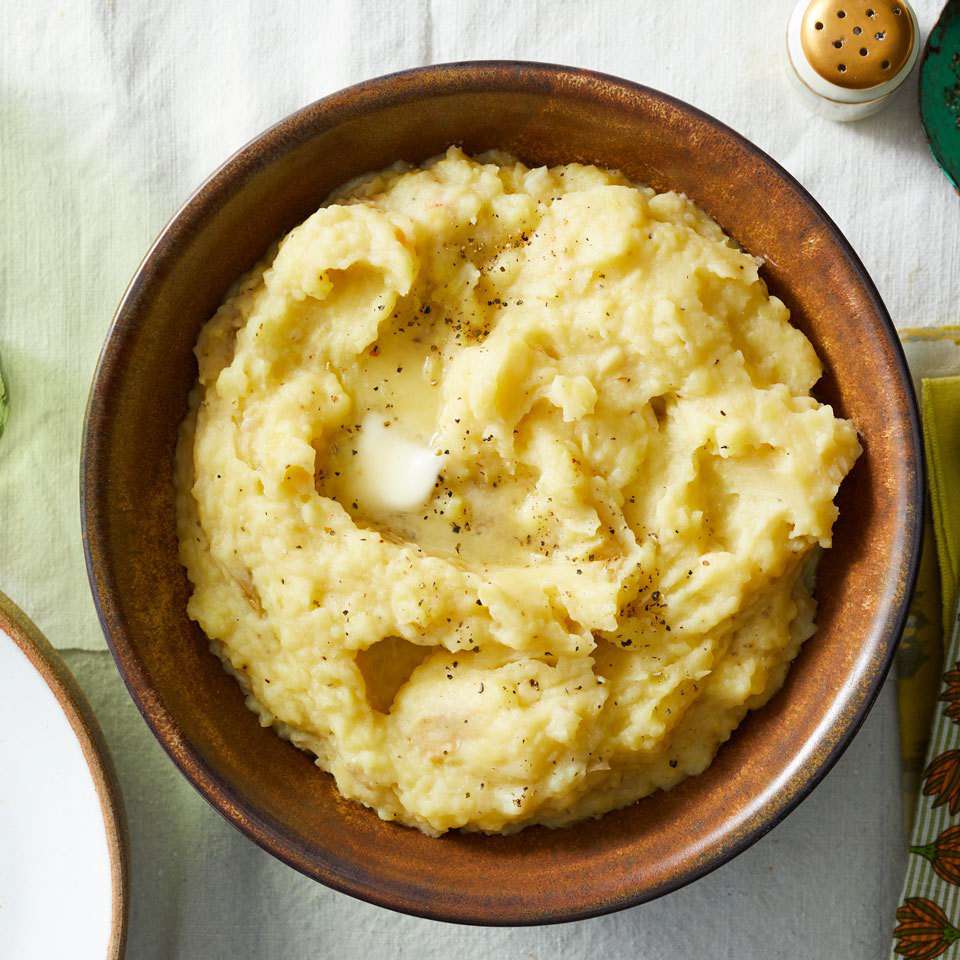
Add the potatoes along with any aromatics (like garlic and onion) you wish to use in a 5- to 6-quart slow cooker. Add 1/2 cup water (you don't need as much water in the crock pot because it creates a wet environment that doesn't allow for any of the moisture to evaporate while cooking). Cook for 4 hours on high.
In the Instant Pot:
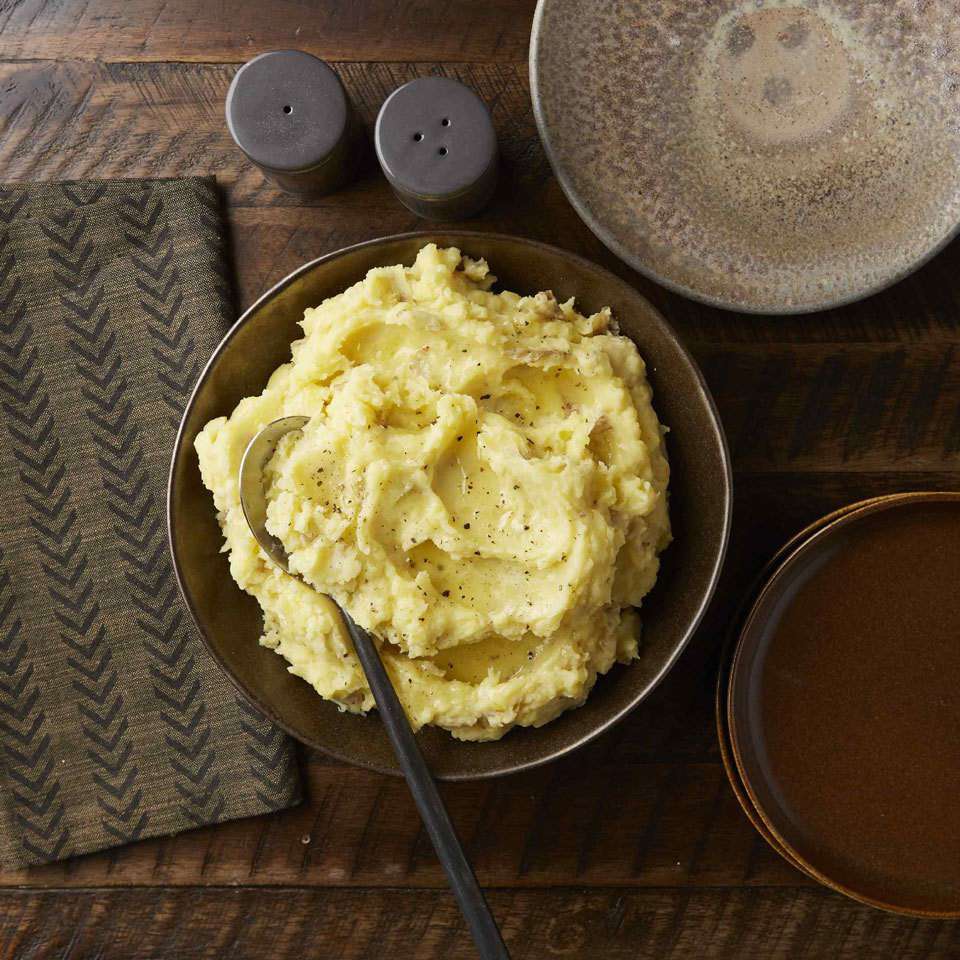
To use your electric pressure cooker, like the Instant Pot, place a trivet inside with the handles up. Add 1 cup of water to the pot and place the potatoes on top of the trivet. Close and lock the lid, and cook at high pressure for 10 minutes. Release the pressure using a quick release.
Step 3: Mash the Potatoes
Transfer the potatoes to a large bowl and mash with a potato masher, ricer or electric mixer. What tool should you use to mash?
Use a Potato Masher for Rustic Mashed Potatoes
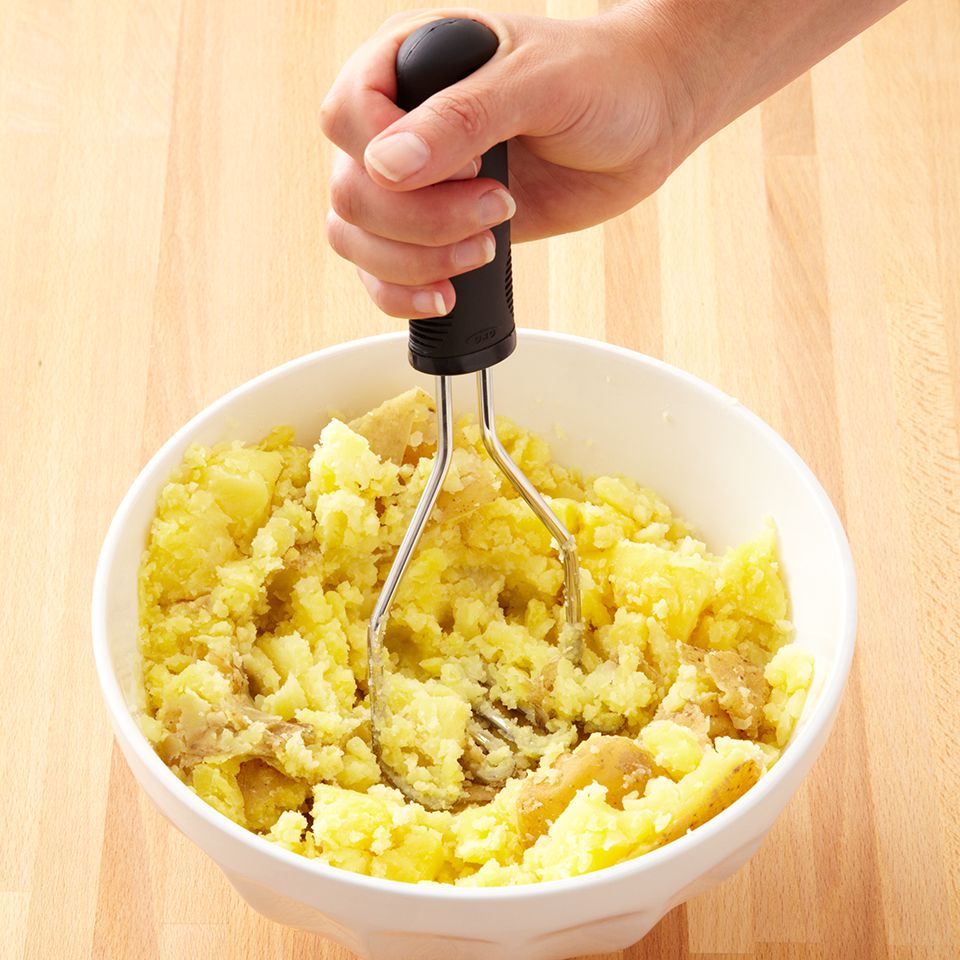
This is the method to use if you leave the peel on your potatoes. Mash with a potato masher until they're as lumpy (or smooth) as you like. No masher? No problem. Use a large fork with sturdy prongs and mash the potatoes against the side of the bowl.
Use a Ricer for Smooth Mashed Potatoes

Want 100%-lump-free mashed potatoes? Use a ricer. A ricer pushes the potato through a grid, making small crumbles that resemble rice. They practically melt together as you stir in flavorings, resulting in a velvety-smooth texture.
Use an Electric Mixer for Whipped Mashed Potatoes
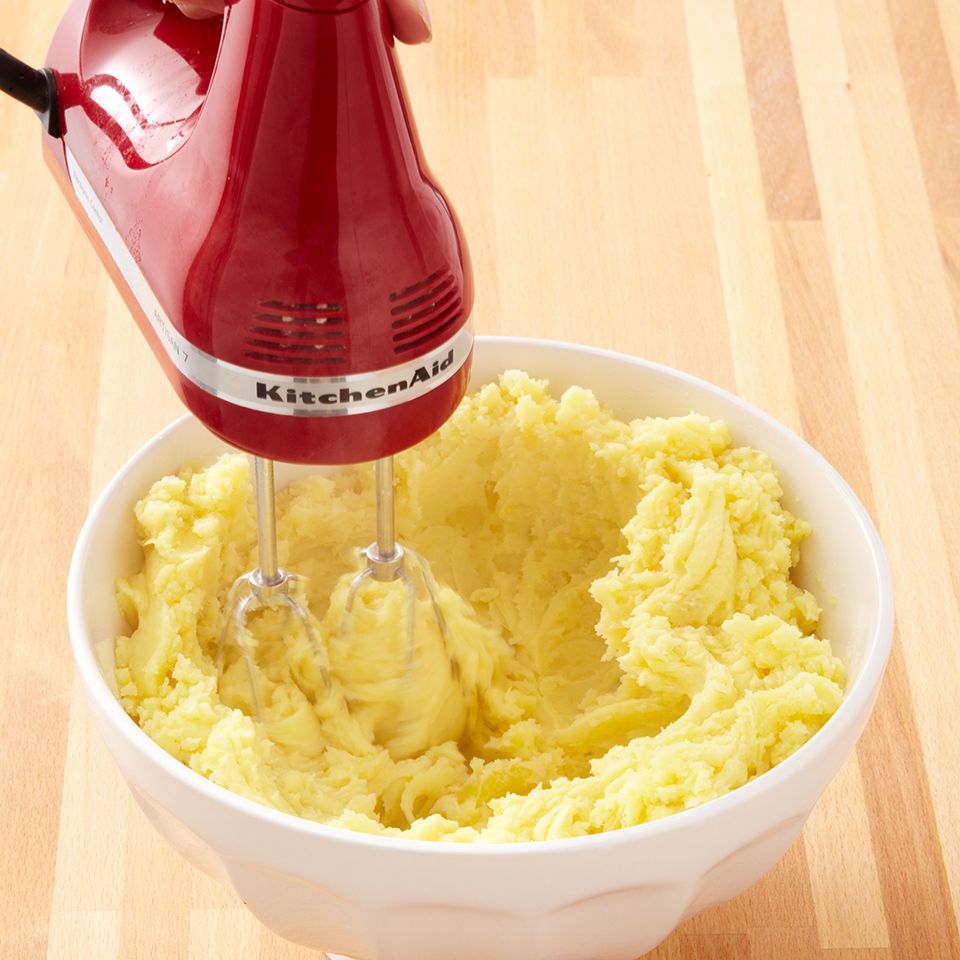
Light and airy mashed potatoes result from using an electric mixer. The mixer breaks up potatoes and whips air into them at the same time. Don't go overboard-the mechanical "masher" can make potatoes gummy; stop whipping as soon as they're smooth.
Step 4: Add Flavor
Stir your favorite flavorings into the hot potatoes just until combined. Season with black or white pepper to taste.
Classic Flavorings
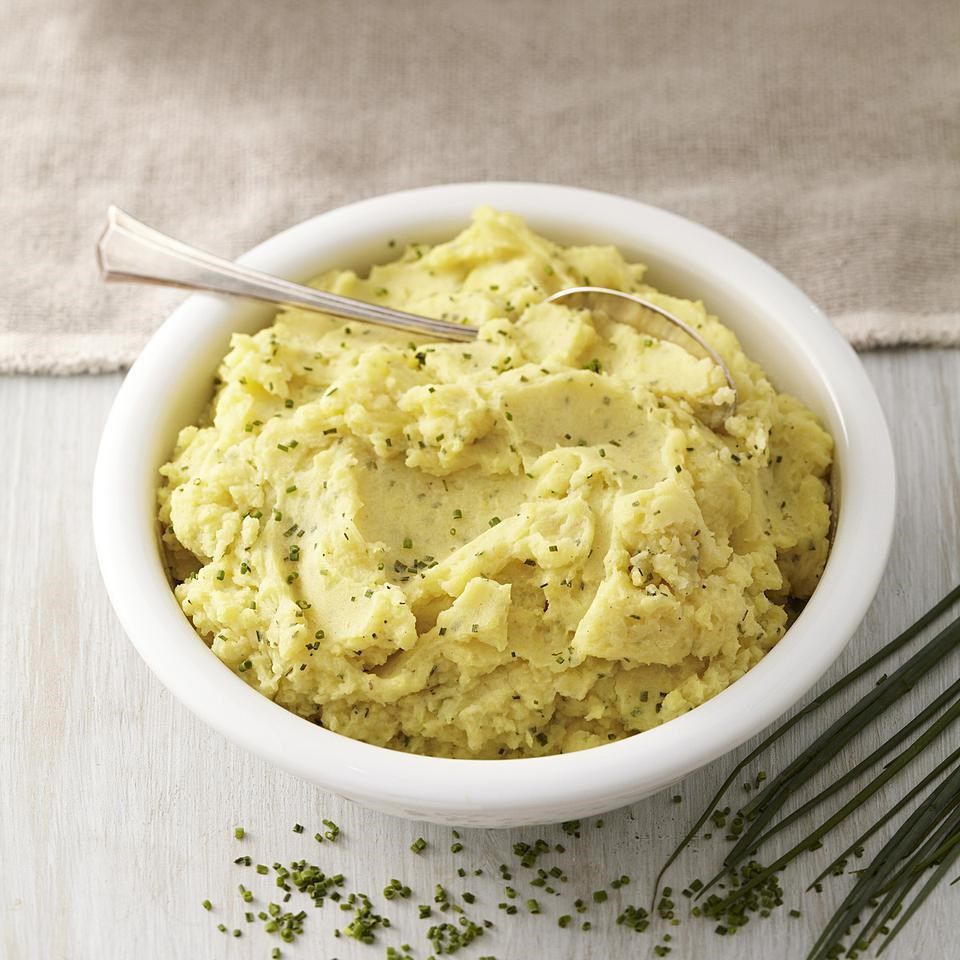
After you mash your potatoes, stir in any of these super-easy, traditional mashed-potato flavorings.
- 2 tablespoons extra-virgin olive oil
- 1 tablespoon chopped fresh rosemary
- 1-1½ cups "no-chicken" broth or reduced- sodium chicken broth, warmed
Horseradish, Parsley & Sour Cream Mashed Potatoes
- 3 tablespoons horseradish
- ½ cup chopped fresh parsley
- 1 cup reduced-fat sour cream
Chive & Buttermilk Mashed Potatoes
- 1 cup buttermilk, warmed
- ½ cup snipped fresh chives
Black Pepper & Blue Cheese Mashed Potatoes
- ¾ cup crumbled blue cheese
- 2 teaspoons freshly ground black pepper
- 1 cup low-fat milk, warmed
Cheddar, Scallion & Bacon Mashed Potatoes
- ½ cup shredded sharp Cheddar cheese
- 2 scallions, sliced
- 3 slices cooked bacon, crumbled
- 1 cup low-fat milk, warmed
New Favorites
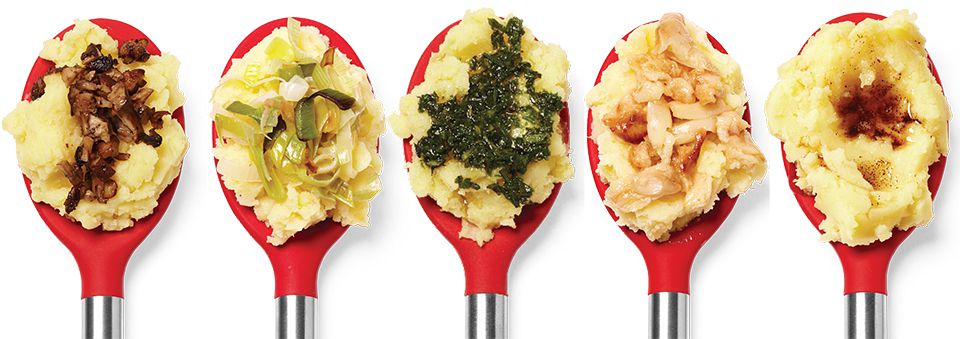
Want something different in your mashed potatoes? Stir in any of these extra-special flavorings along with 1 cup warm buttermilk or low-fat milk.
Roasted Mushrooms: Toss 5 cups chopped mixed mushrooms and 3 tablespoons chopped shallots with 1/4 cup extra-virgin olive oil, 1/4 teaspoon salt and pepper. Spread on a baking sheet. Roast at 425°F until brown, 20 to 30 minutes. Remove from oven; stir in 2 tablespoons dry sherry.
Sautéed Leeks: Heat 2 tablespoons butter in a large skillet over medium heat. Add 4 cups thinly sliced leeks (whites and greens from about 2 large leeks). Cook, stirring, until soft and beginning to brown, 4 to 8 minutes.
Olive Oil & Herbs: Crush 1 tablespoon each chopped fresh sage, thyme and rosemary, 1/4 cup chopped fresh parsley, 1 clove minced garlic and a pinch each salt and pepper in a mortar and pestle until a paste forms. Stir in 1/4 cup extra-virgin olive oil.
Roasted Garlic: Slice the tips off 2 garlic heads, exposing the cloves, and place in a small baking dish. Drizzle with 2 tablespoons extra-virgin olive oil. Roast at 400°F until the garlic feels soft, 20 to 40 minutes, depending on size. Gently squeeze garlic cloves from the skins into potatoes.
Brown Butter: Melt 3 tablespoons butter in a small saucepan over medium heat. Continue heating until it starts bubbling; stir and cook, watching carefully so it doesn't burn, until it turns golden brown, 2 to 4 minutes.
5 Tips for Perfect Classic, Fluffy Mashed Potatoes
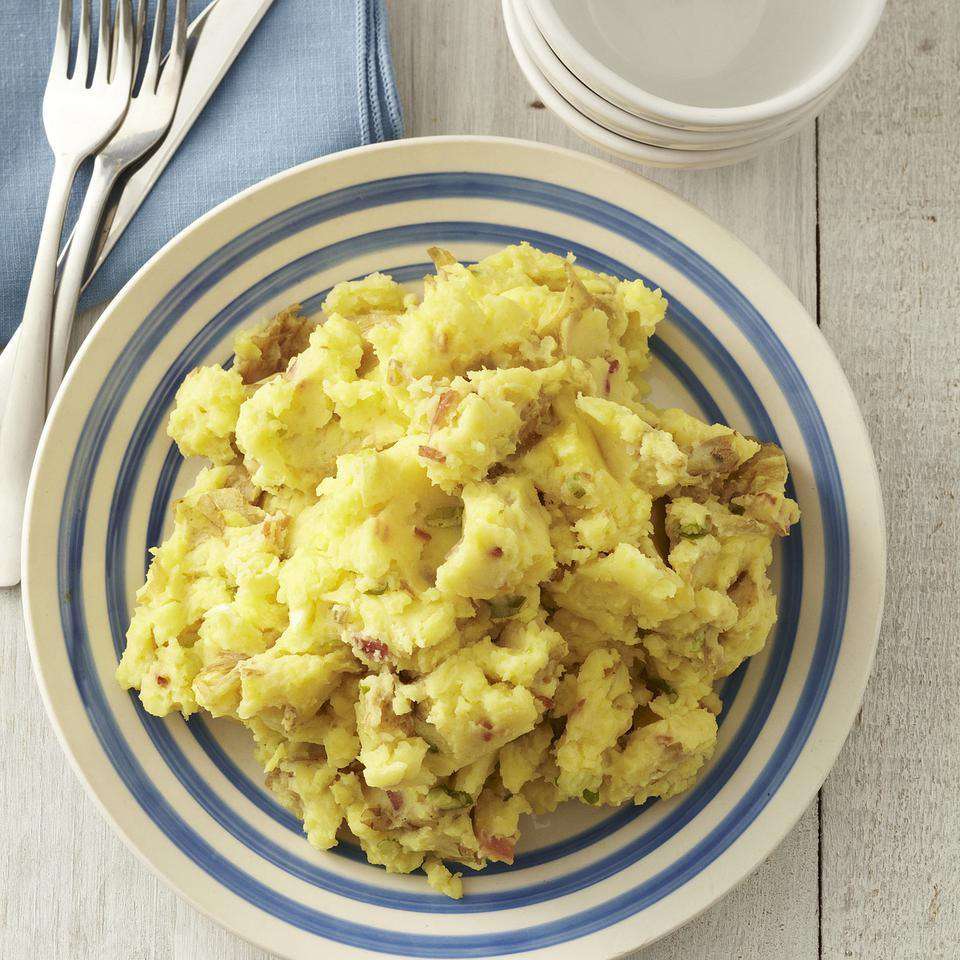
1. Cook Potatoes Using the Right Method
Start them cold: Add potatoes to cold water and bring to a boil. The potatoes cook more evenly than if you add them to water that's already boiling. Make sure that your potatoes are cut into equal sizes, too-big pieces and small pieces cook at different rates.
2. Don't Overcook or Undercook the Potatoes
Cooking the potatoes just right is key. If they're undercooked, you'll have pockets of crispy potato chunks-a big no-no for classic fluffy mashed potatoes. If you overcook them they disintegrate and your potatoes will be soupy. The specific cooking time depends on the size of your potato: a perfectly cooked piece of potato should give no resistance when cut with a knife, but shouldn't crumble into a million pieces.
3. Don't Overmix the Potatoes
Even if you've picked the right potatoes, overmixing mashed potatoes can lead to a stiff, chewy texture. Keep them fluffy by mashing them through a ricer for smooth potatoes or using a hand-held masher for chunkier potatoes. This limits the amount that the potatoes are processed so the starches stay intact. If they're overwhipped, the starches break down further and give you a sticky result.
4. Pick the Right Potato
There are plenty of different kinds of potatoes out there, but all fall into three categories: waxy, starchy and all-purpose. When you're talking mashed potatoes, Yukon Gold is best. They have less starch than a "floury" potato (like russets), but more than a "waxy" potato (like a red potato). Not enough starch and potatoes are dry; too much, they're gummy. You can also try sweet potatoes for a twist on this classic.
5. Serve Them Hot
Mashed potatoes lose their luster as they sit. Try to serve them right away after finishing them. To keep mashed potatoes warm until you're ready to serve, transfer to a slow cooker, cover and keep on the "warm" setting for up to 2 hours. If you make them ahead and want to reheat them, do so slowly with the help of a double boiler. This way, they won't burn if they come in contact with the bottom of a saucepan on the stove. And since you won't be worried about burning, you can stir them less, which will prevent them from becoming gummy.
This article was written by Hilary Meyer from EatingWell and was legally licensed through the Industry Dive publisher network. Please direct all licensing questions to legal@industrydive.com.


